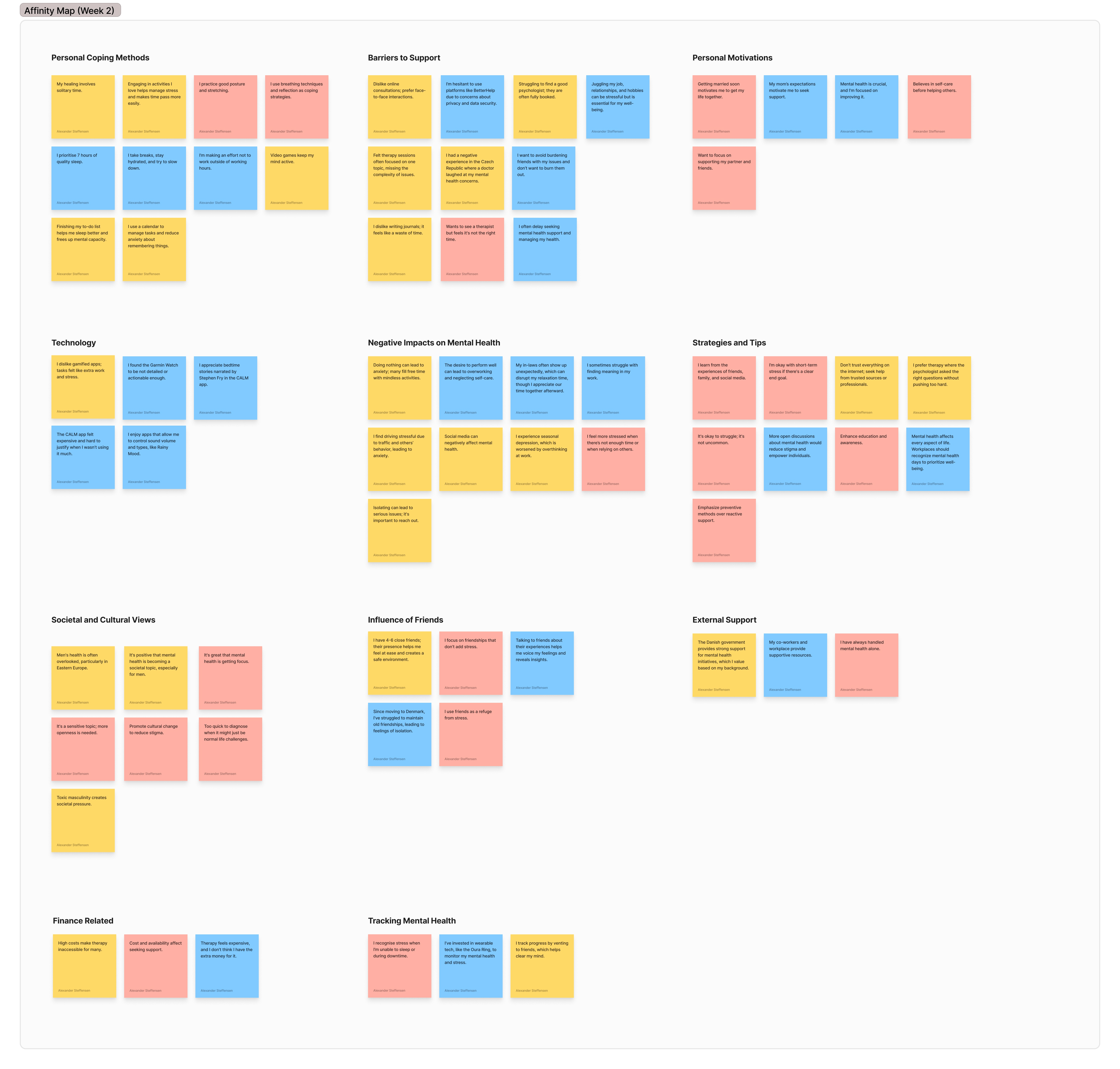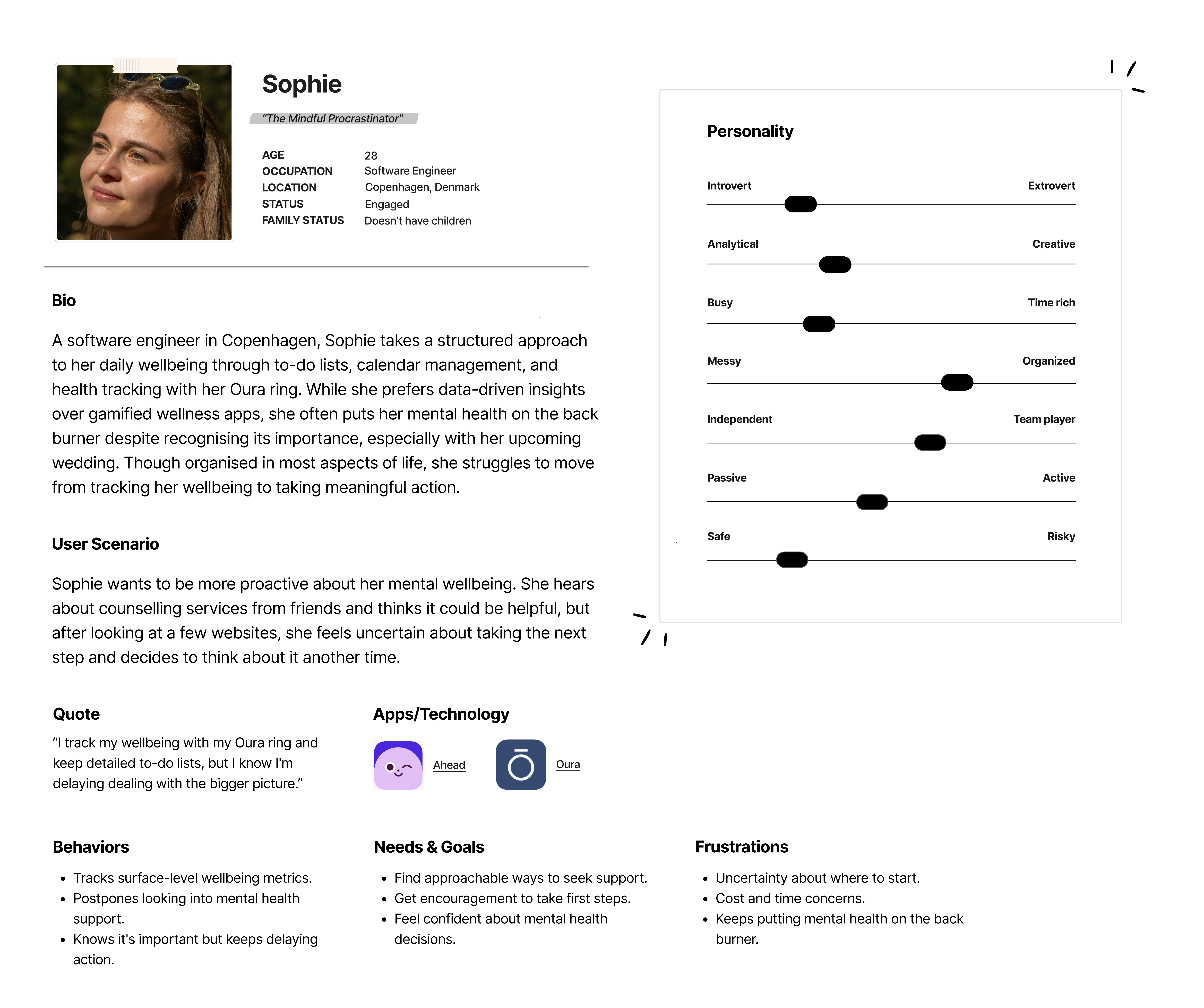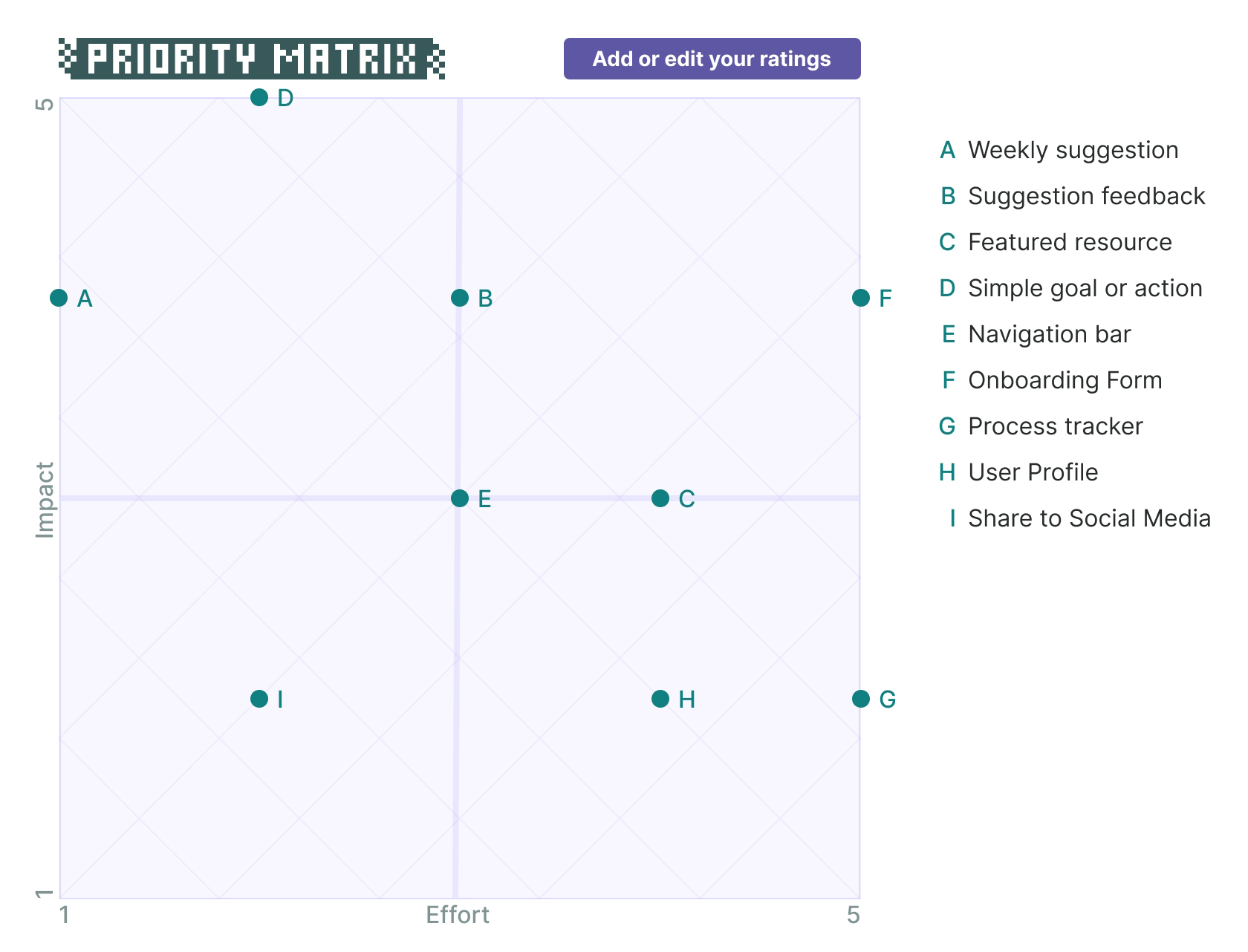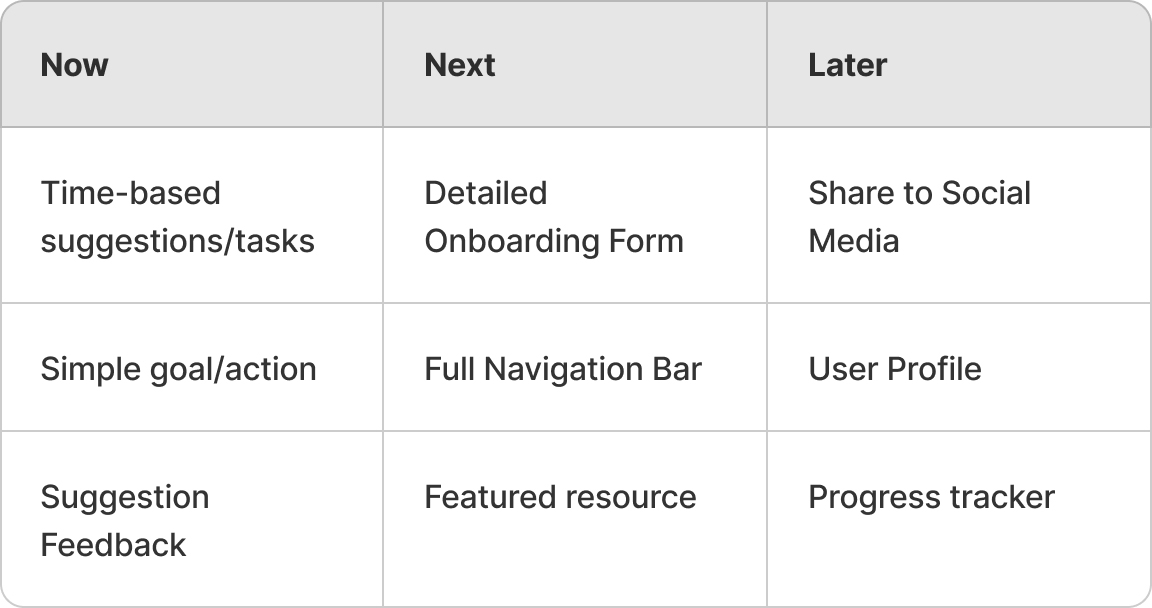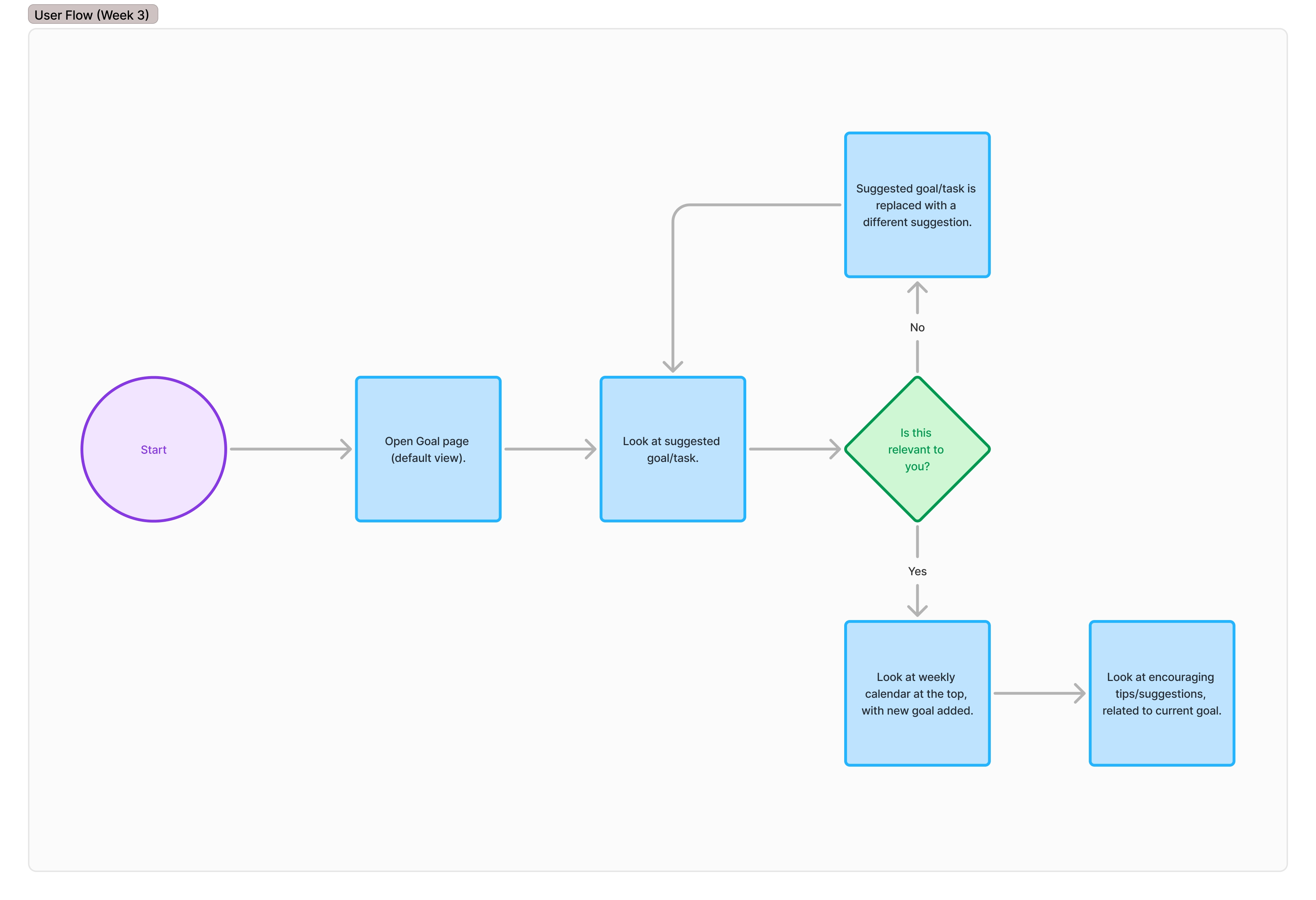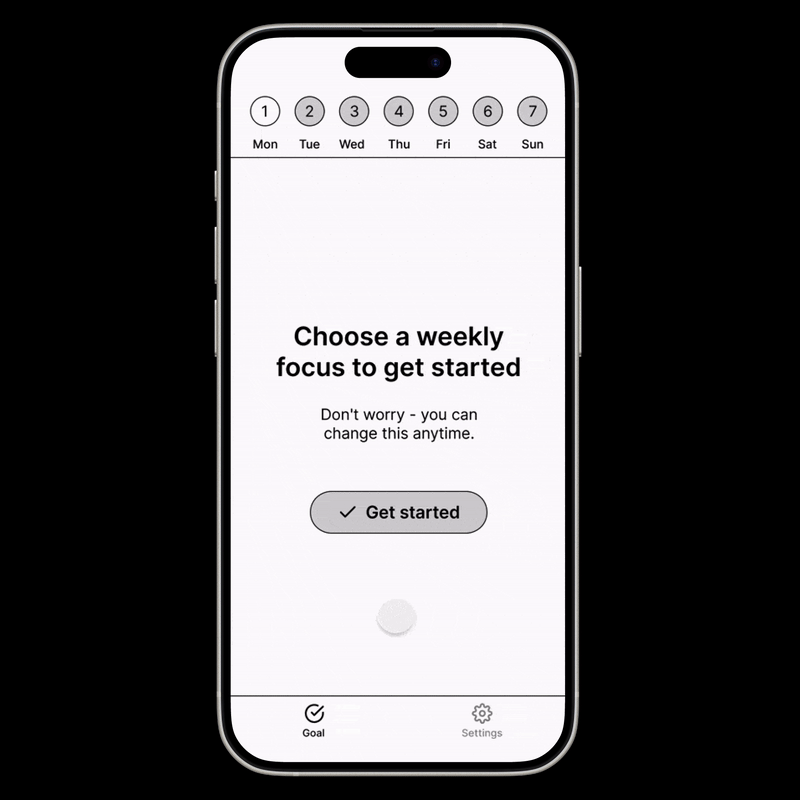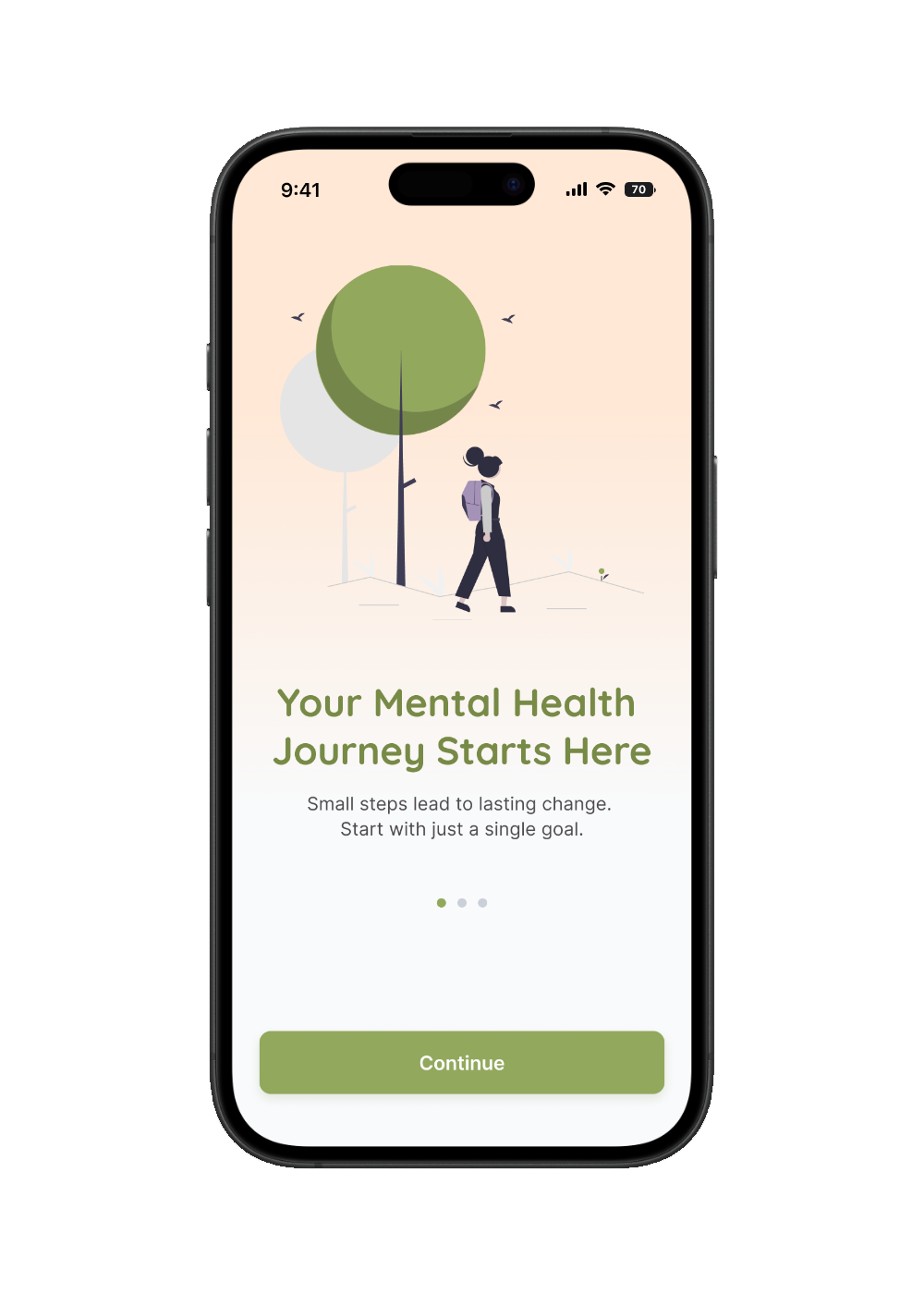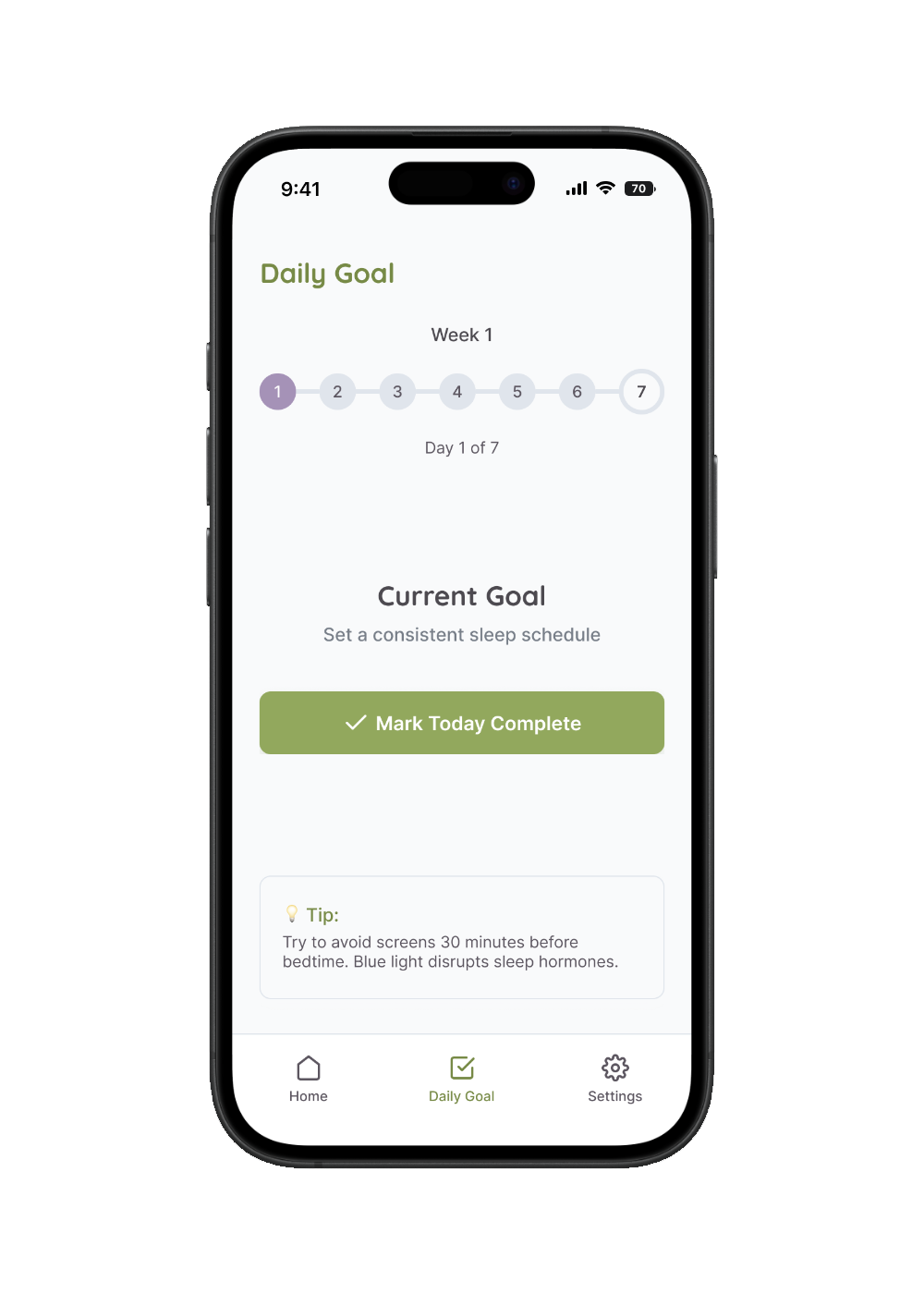Mental Health App
Making Mental Health Support Accessible with User-Centered Design
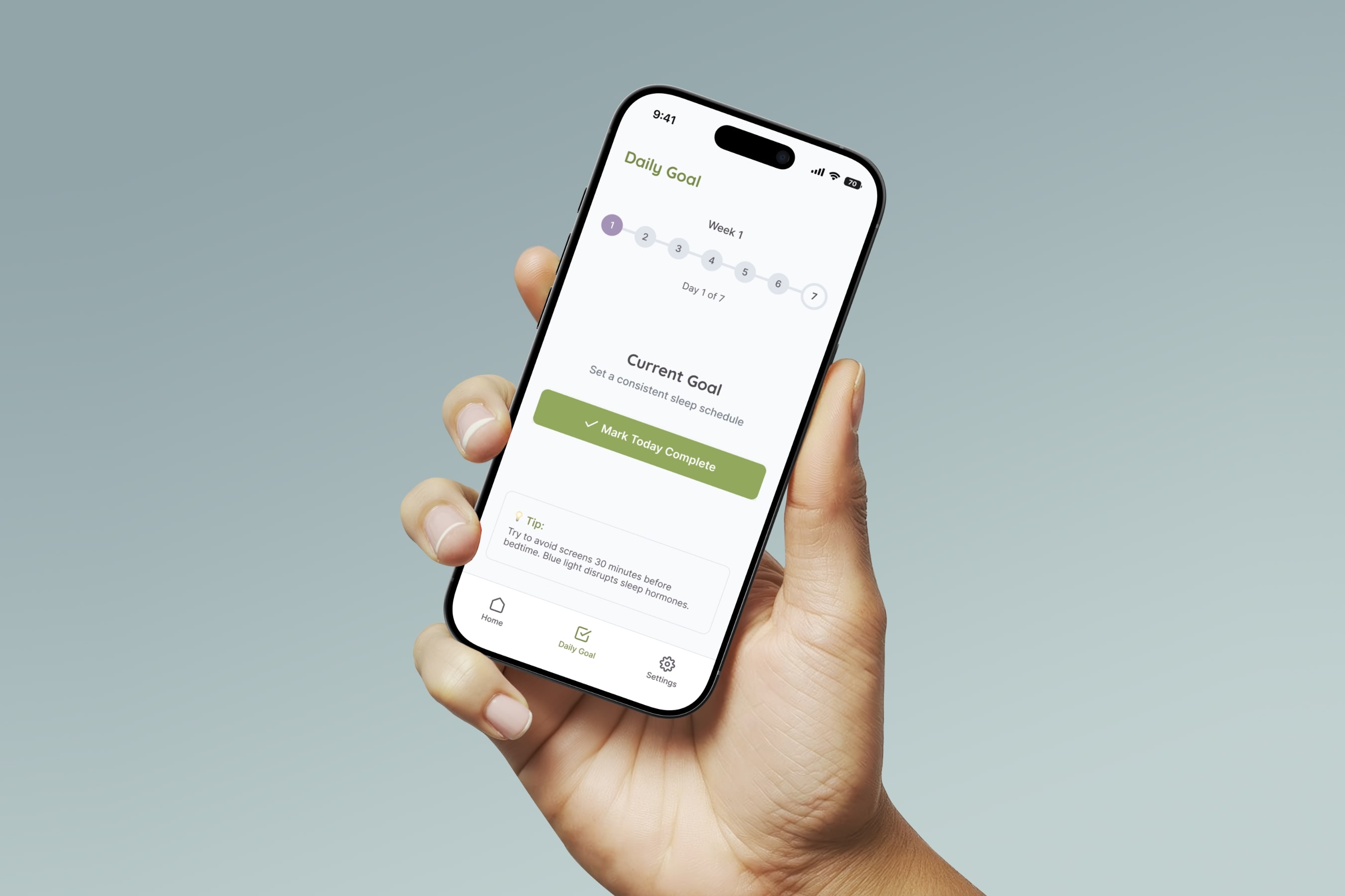
Responsibilities
UX Research
UI/UX Design
Prototyping
Timeline
10 weeks
2024
Education
UX Design,
General Assembly
Tools
Figma
FigJam
Maze
Overview
This project tackled a key challenge: How might we make mental health support more accessible through a mobile app? The goal was a user-centered solution offering personalized guidance, actionable steps, and simplified mental health management.
Through user research, iterative design, and usability testing, I developed a mobile app that breaks down mental health management into manageable, trackable goals while providing the encouragement and structure users need to build healthy habits.
Problem & Goals
Many people struggle with mental health but lack access to affordable, personalized support. Traditional therapy can be expensive, time-consuming, and intimidating for those taking their first steps toward better mental health.
Affordable Access
Make mental health support accessible regardless of financial constraints or insurance coverage.
Personalized Guidance
Provide tailored recommendations based on individual needs and preferences.
Achievable Steps
Break down overwhelming goals into small, manageable daily actions that build confidence.
Progress Tracking
Visualize progress and celebrate achievements to maintain motivation over time.
Research & Discovery
User Interviews
In-depth chats with 3 participants about their mental health journeys and coping strategies.
Affinity Mapping
Analyzed interviews to uncover patterns and key themes on barriers and motivations.
Persona Development
Created a user persona to guide design decisions throughout.
Feature Prioritization
Used impact vs. effort matrices to focus on high-value features for the initial version.
Affinity mapping: organizing research findings into key themes.
Key Research Insights
The interviews revealed critical themes that shaped the design direction:
Personal Coping Methods
Users have developed strategies but lack structure and consistency in applying them effectively.
Barriers to Support
Cost, stigma, and lack of time were significant obstacles to seeking professional help.
Motivation Factors
Progress tracking and achievement recognition were important for maintaining long-term engagement.
Need for Structure
Users sought guidance and frameworks to manage their mental health, rather than navigating it alone.
User Persona & Strategy
Persona: Sophie, a 28-year-old software engineer dealing with anxiety.
Based on my research, I created Sophie, a 28-year-old software engineer who experiences anxiety but finds traditional therapy difficult to access due to cost and time constraints. She's tech-savvy and interested in tools that can help her manage her mental health in small, achievable steps.
Priority Matrix: Feature prioritization using impact vs. effort analysis.
Now-Next-Later: Combined with the priority matrix for a clear view of what to prioritise.
Design & Prototyping
User flow diagram mapping the goal selection and tracking process.
Wireframing & User Flow
I created user flows to map out the critical path for goal setting and tracking, ensuring the experience would be intuitive and straightforward. The wireframes focused on simplicity and clear call-to-actions, with reassuring messaging like "Don't worry - you can change this anytime" to reduce anxiety about making commitments.
Low-fidelity wireframe showing the weekly goal setup flow.
Final Design Solution
Final design featuring calming visuals and clear progress tracking.
Design Decisions
The final high-fidelity prototype incorporated insights from two rounds of usability testing with five participants. Key design decisions included:
- Calming color palette: Soft greens to evoke nature and ease user anxiety.
- Encouraging microcopy: Language that acknowledges the difficulty of mental health management while providing support.
- Weekly calendar view: Easy tracking and visualization of progress over time.
- Embedded helpful tips: Contextual guidance throughout the user journey.
- Clear action buttons: Straightforward labeling to reduce cognitive load.
Interactive Figma prototype demonstrating the complete user experience.
Impact & Key Learnings
Project Impact:
- Created a user-centered solution that makes mental health management more approachable and less overwhelming.
- Demonstrated proficiency in end-to-end UX process from research to high-fidelity prototyping.
- Successfully validated design decisions through iterative user testing.
Key Learnings
Working on this mental health app project taught me several valuable lessons about designing for sensitive and important user needs:
- Sensitivity in design: Designing for mental health requires additional care and consideration for users in potentially vulnerable states.
- Progressive disclosure: Breaking complex processes into manageable steps helps reduce cognitive load and anxiety.
- Balancing aspirations with reality: Encouraging better mental health while acknowledging real-world limits.
- The power of clear communication: Simple, encouraging language can make a significant difference in how users perceive and engage with mental health tools.
